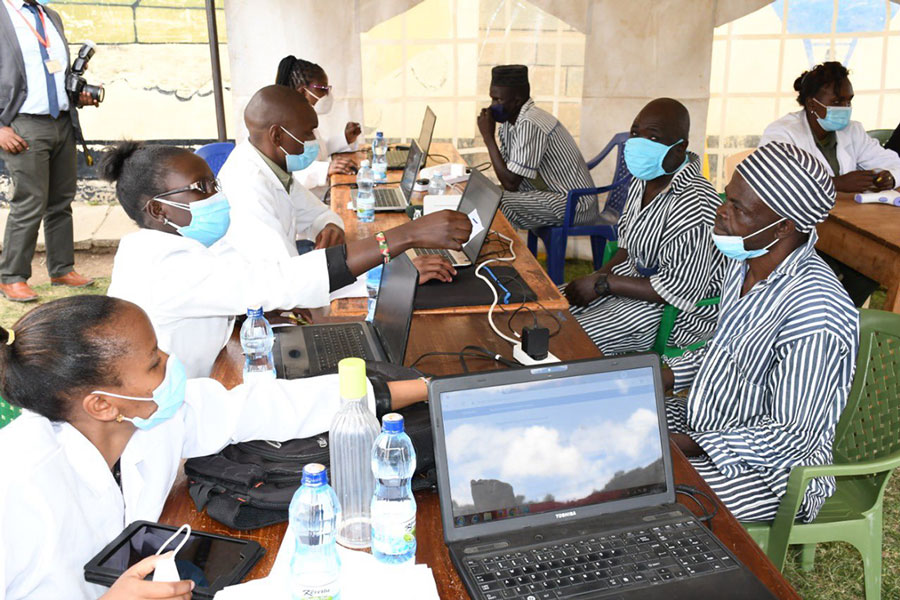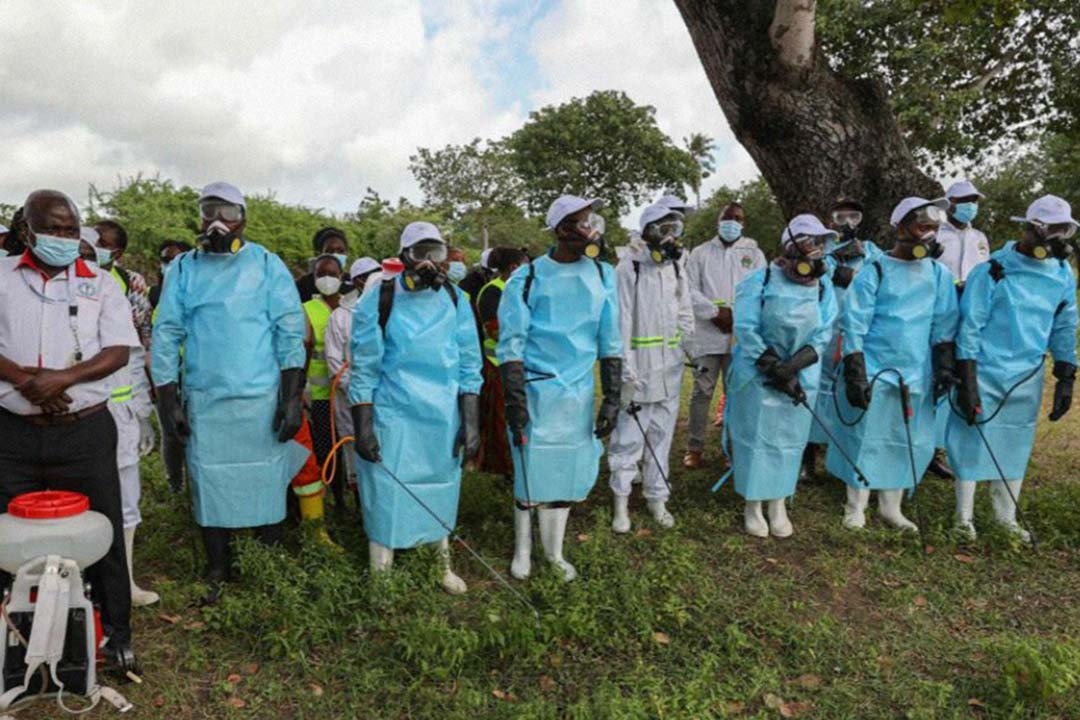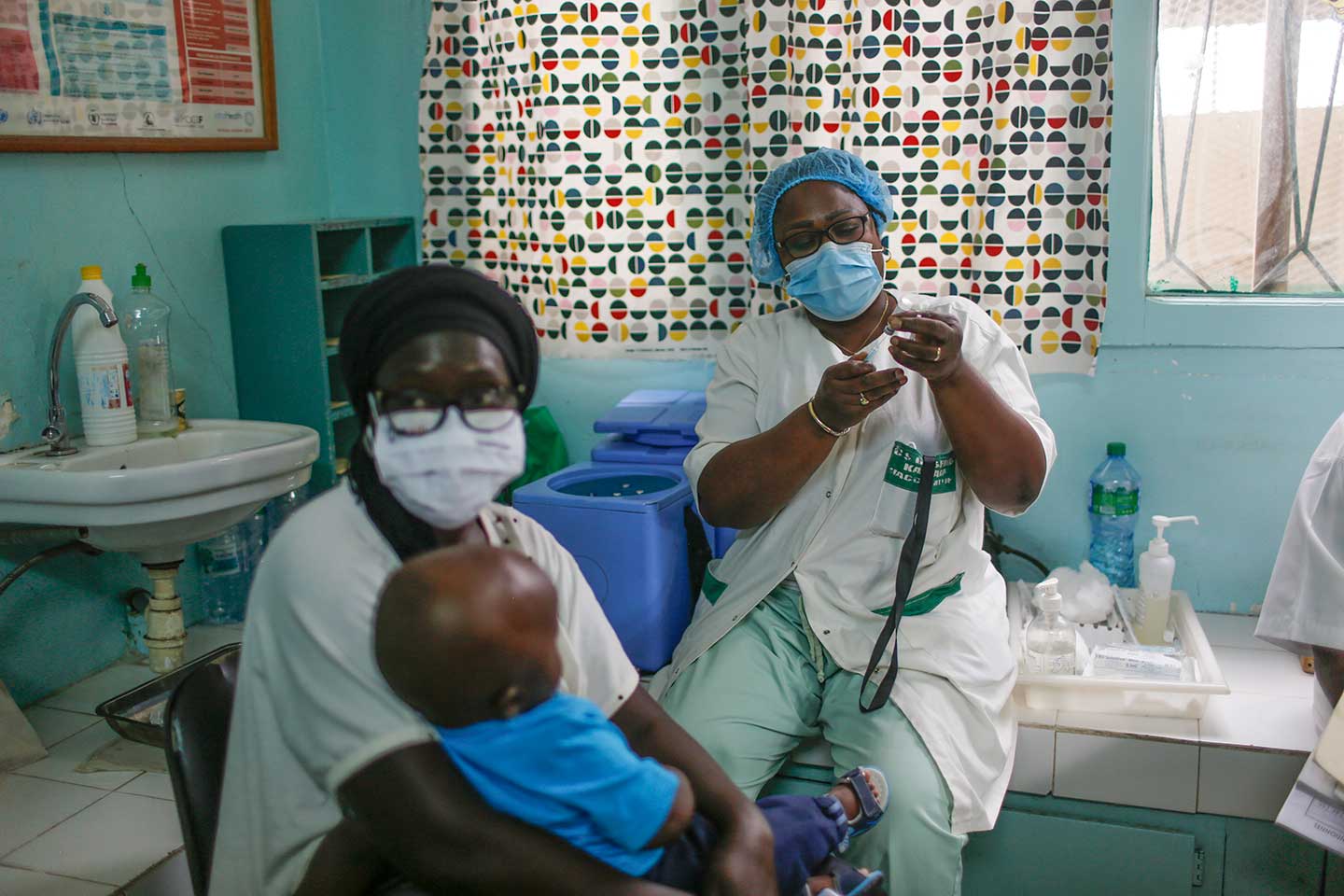Reaching remote villages in Kenya: “We have to go to them”
Nurse Rashid Abdi knows how challenging it can be to keep vaccines cold all the way from manufacture to inoculation – especially when your patients are the children of pastoralists in rural Isiolo county, Kenya.
- 6 July 2021
- 4 min read
- by Mukami Mungai
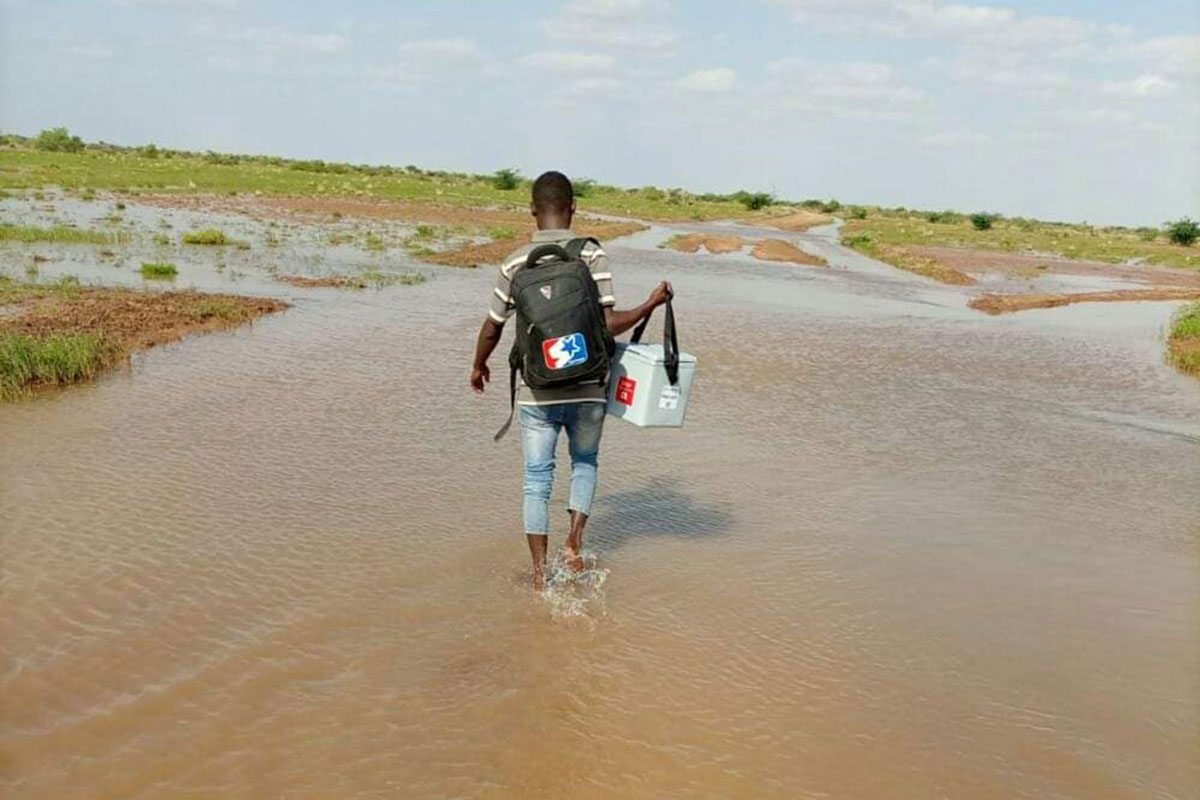
Twenty-four-year old Rashid Abdi, a nurse at a dispensary in a remote part of Isiolo, Kenya, spends his days traversing villages with a store of life-saving vaccines in an insulated carrier bag.
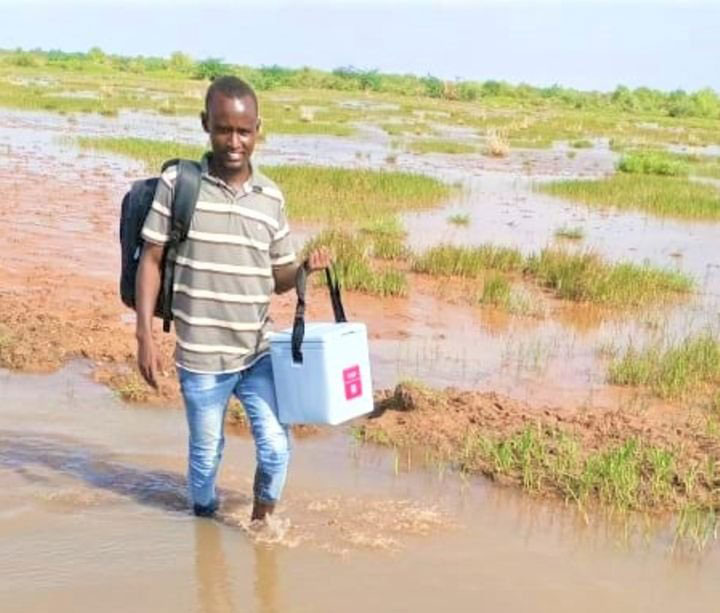
“Many expectant and new mothers live miles away from the nearest health centre, and some have to endure a 24 kilometer journey by foot in order to access immunisation services,” says Abdi. “It's hard to deliver vaccines to the people there. During floods and conflict, villages are cut off and vaccine carriers come in handy.”
To ensure that every child gets immunised, even in the most remote villages, the Kenyan government, through the Ministry of Health and various partners, has invested heavily in vaccine storage facilities.
When it comes to protecting these harder-to-reach communities, the bag is almost as essential as the vaccine itself. That’s because, as Abdi knows, it’s crucial to keep the vaccines refrigerated from the point of manufacture all the way until the point of inoculation. A break in the so-called “cold chain” can spoil the doses. But keeping that chain unbroken is a challenge in remote rural places like Iresaboru, where Abdi works, because the supply of electricity to health centre refrigerators can be unreliable.
In 2011, the United Nations Children’s Fund (UNICEF) reported that an estimated US$ 1.5 million worth of vaccines were lost in five months, due to difficulties in maintaining the vaccine cold chain to remote locations. The impacts on health can be major – according to the World Health Organization (WHO), 19.7 million children under the age of one did not receive basic vaccines in 2018.
Have you read?
To ensure that every child gets immunised, even in the most remote of villages, the Kenyan government, through the Ministry of Health and various partners, has invested heavily in vaccine storage facilities, such as cold rooms, refrigerators and freezers, but also mobile temperature management solutions, like coolant packs, cold boxes and vaccine carriers.
Because Abdi and his mobile vaccination team cover such a large geographical expanse, they often have to travel and stay out in the field for various periods of time. This means they have to be well prepared with the necessary cold packs for vaccine preservation.
"When you work in a vast place like this, you have to work extra hard and go out of your way to ensure improved services. My goal is ensuring 100 percent immunisation. I want everyone’s child to get services that I'd want my kids to get. I have covered 1,100 children so far,” he passionately explains.
Children living in Kenya’s northern counties are more likely to die from preventable diseases than those living elsewhere.
Abdi says, “Isiolo is a pastoralist area and residents move from place to place seeking water and pasture. They are often far from immunisation services which means we have to go to them to inoculate their children.”
It is important that all those who handle vaccines have the skills required to use them. Abdi says that his duties include checking and recording vaccine temperatures in the morning and at the end of the day, correctly storing vaccines, diluents and water packs and monitoring the cold chain. He has been trained on the actions to take if temperatures rise out of range, according to requirements set by WHO.
“In order to protect the vaccines, it is important to know how to pack vaccine carriers, use it during immunisation sessions and keep it in good working order," Abdi notes. He stresses that the government must make financing for logistics and cold chains a priority to allow vaccines to reach remote communities more easily.
More from Mukami Mungai
Recommended for you




